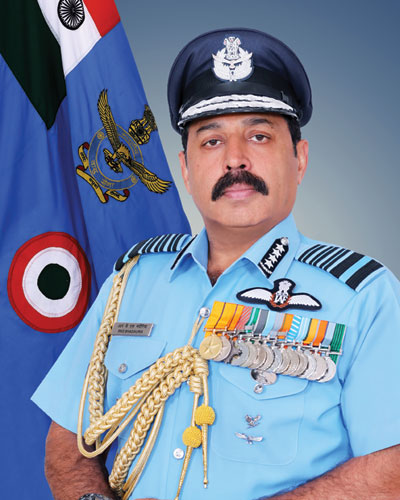Having Operationalised the Ground Segment of IACCS, We Are Now in the Process of Integrating and Operationalising the Airborne & Space Segments
 Balancing the requirements with the budget is a huge challenge. Given the present circumstances, what are the IAF’s priorities? The present crisis in Ladakh has increased the IAF burden of air maintenance. How is the IAF balancing its existing commitments with the new ones?
Balancing the requirements with the budget is a huge challenge. Given the present circumstances, what are the IAF’s priorities? The present crisis in Ladakh has increased the IAF burden of air maintenance. How is the IAF balancing its existing commitments with the new ones?
The IAF acquisition plans are well drawn out and based on long-term perspective planning with an aim to meet all routine, operational and emergent tasks. In addition, a regular upgrade programme for current assets is in place to prevent obsolescence, infuse the latest technology, and maintain operational capability. Budget constraints are a reality and we have reprioritised accordingly. While the past few months have indeed seen a significant increase in air maintenance tasks due to the Covid pandemic and thereafter the developments on our northern frontiers, we have suitably factored it in our over plans for the year. We have the desired assets and crew to undertake all such assignments.
The new draft DPP has recommended leasing as an option. It is being said that instead of buying platforms such as FRA and transport aircraft, it will be better to lease them? How does the IAF feel about it? What are the pros and cons of leasing vis-a-vis ownership?
The draft DAP 2020 provisions a category under which equipment can be leased. The method addresses major concerns of financing the project and reduces administrative costs. It also mitigates effect of equipment obsolescence allowing faster acquisition of capability, and reduced administrative costs. For the Leaser, a lease instrument provides a way to offset benefits of equipment depreciation for better returns on capital, against assured returns from a government contract.
While there are risks of guaranteed availability in leasing vs outright purchase, we are clear that the idea has potential, and are actively studying it as a means of quickly augmenting certain operational requirements. FRA could be one such requirement considering low number of such platform required.
Two big lessons of the Balakot air strike were inadequate electromagnetic spectrum and data linking for network centricity. What is the IAF roadmap for achieving real time connectivity of ground, airborne and space assets? Additionally, with cyber and electronic warfare emerging as new war domains, what steps are being taken to ensure cyber defence of all assets and networks?
Reliable and real time connectivity across various mediums of operation is essential to network centric operations. The IAF is leading in network operations and have fielded a fully networked pan-India Integrated Air Defence Command and Control System. Networking is a continuous process with newer domains being added even as we continue to refine existing networks to make them robust and cyber secure. Having operationalised the ground segment of IACCS, we are now in the process of integrating and operationalising the airborne and space segments which will enhance our networking to fight the wars of the future.
What is the IAF plan to maintain its combat numbers? There is speculation that MRFA may not go through and the IAF will strike a balance with more Su-30MKI, LCA MkI & MkII, the Rafale already contracted for and the AMCA when it comes. Is there any basis to this speculation? In how many years do you expect to operationalise armed unmanned platforms?
While technology and force multipliers enhance combat power it is essential for the IAF to maintain the desired strength in numbers to carry out assigned tasks across all our frontiers. We have redefined our roadmap for immediate and future inductions in consonance with the Long Term Perspective Plan for assets and technology.
The project in immediate focus is the contract for 83 LCA MK1A, which is close to being signed. 114 MRFA are to be progressed under Make in India for which we have issued the RFI. The responses to the same are under study. We are also pursuing the AMCA project for which specifications have been given to the DRDO. The inductions of the LCA and its versions, Rafale, 114 MRFA, additional Su-30 MKI and MiG 29’s will improve the strength of the IAF fighter fleet in a phased manner over the next seven to eight years. AMCA is likely to join the IAF fleet in the next decade.
Various options are being explored to acquire capability under Armed Unmanned platforms. We are moving rapidly in this domain, and are seeking to operationalise the entire spectrum ranging from armed UAVs to UCAVs in the next decade.
You must be logged in to view this content.

